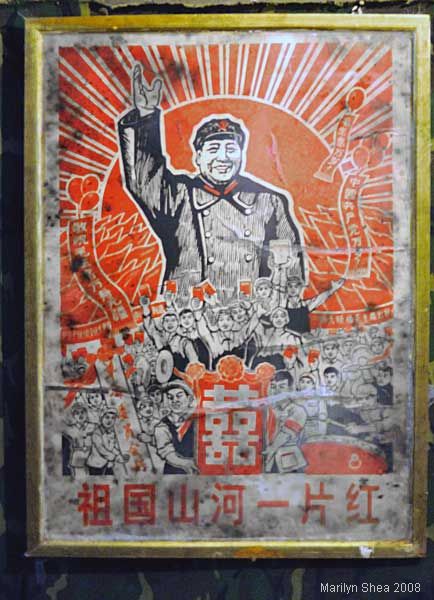 |
| It was the Long March that transformed Mao Zedong into a major power in the Communist Party. Only about 10,000 people arrived in the northwest city of Yan'an in Shaanxi Province at the end of the Long March. Eighty to ninety thousand had started in Jiangxi, half had been lost in battle, and three quarters of the remainder to illness and accident on the way. It could have been viewed as a failure, but Mao turned it into a mythic journey and a victory. It was an important political tool to reinvigorate interest in the Communist Party, but it was also an important step away from Russian advisors. For Mao, it was a vindication of strategies he had been advocating for years and which had gotten him in trouble with the leadership earlier. Now, far from being thrown off of the Central Committee, he was among the four most powerful leaders in the Party.
He became more resistant to directives from Moscow and in 1937 there was a crisis. The Japanese invaded Beijing and moved out to take over China. That was the root of the crisis between the Soviets and the CCP. For the Russian, their own self-interest demanded that the Japanese be stopped. Further, the Soviets had a strong foothold in the western area called Xinjiang. Neither the CCP nor the Guomindang had a real presence there. Xinjiang had a long shared border with the Soviet Union. Historically it was part of the Silk Road, the trade route between China and the West. Its inhabitants were largely Uigher, Mongolian, and Tibetan. The Muslim Uighers were dominant, and had ethnic relationships to peoples within the Soviet Union. The area was also rich in natural resources and had obvious military strategic importance. Where the European powers had built a presence in Shanghai, the Russians had concentrated on ties to Xinjiang. Mao Zedong wanted to make Xinjiang one of his power bases. He saw its border with the Soviet Union as giving easy access to supplies and armament from Russia. The Soviets wanted to maintain the status quo and repeatedly discouraged CCP expansion into the area. They also were not planning on supporting the war effort with the amount of material envisioned by the Chinese. The Soviets and the CCP began to have increased numbers of disagreements over policy. Mao Zedong and others rejected the orthodox interpretation of Marx by the Soviets, and rejected the right of the Soviets to make definitive interpretations at all. Mao had already had success in turning from the cities, where the Soviets believed revolution began, to the countryside, where Mao found his greatest support. The military crisis between the CCP and the Soviets came from the expectation that the Soviets would help fight the Japanese, and the Soviet's firm resolve to do nothing of the kind. In July of 1938, Soviet and Japanese troops fought briefly in Manchuria over the shared border. Both sides backed off. In August of 1939 the Soviets signed a non-aggression pact with Hitler's Nazis. |
http://hua.umf.maine.edu/China/beijing2.html
Last
update: August 2009
© Marilyn Shea, 2009